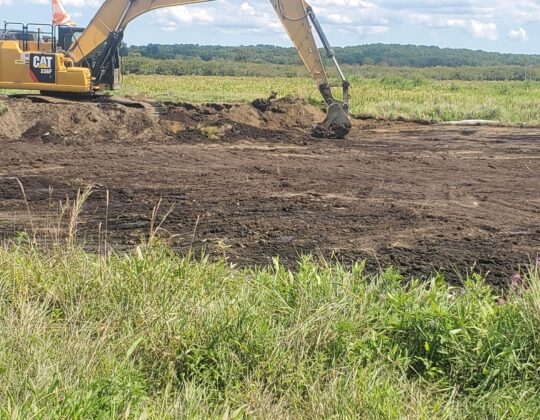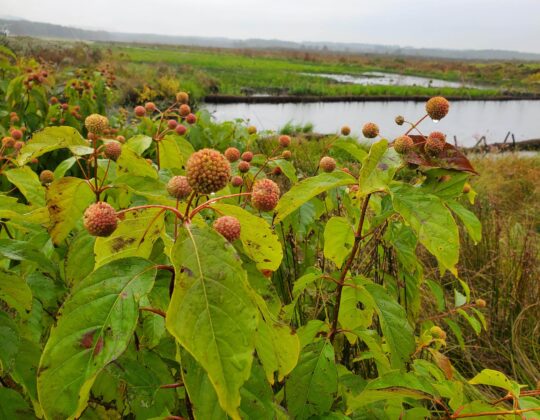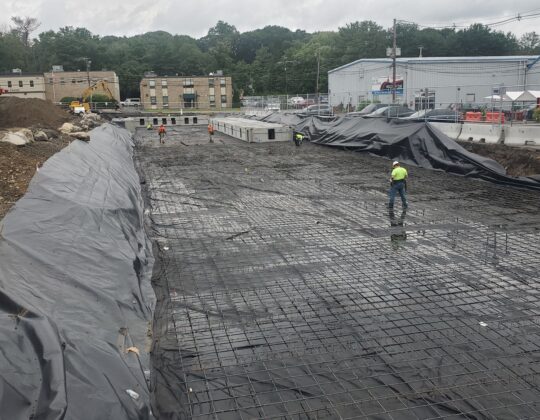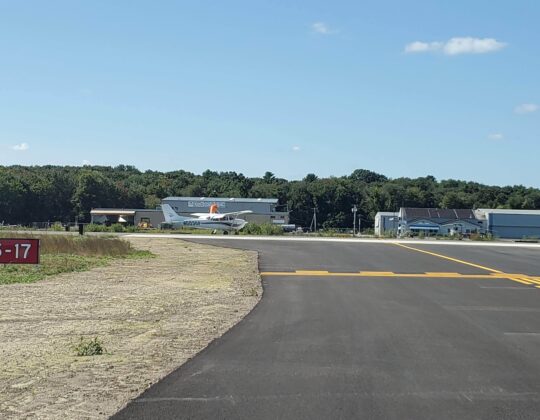Airport Taxiway Realignment Improves Safety- And Area Wetlands
December 14th, 2023
In 2021, Commissioners at Norwood Memorial Airport received design funding from FAA for the realignment of one of its taxiways and runway safety area to enhance the safety of aircraft and passengers using the Airport, completing an airport wide effort to have all taxiways meet updated FAA airport layout criteria.1 With construction funded by FAA in 2022 and completed in October 2023, this project brings substantial benefit to the peat-based floodplain wetlands found within the area.
The three taxiway modifications at Norwood Memorial Airport were closely associated with locations where aircraft are in active operation and are intended to eliminate incursions, reduce direct connections from apron areas to runways, and to comply with FAA design standards.2
So, why all the fuss?
Close calls at America’s airports do happen. In fact, during 2023 there were 1,752 such “incursions” at US aerodromes.3Common types of runway incursions include a pilot crossing a runway without a clearance while en route to an airport gate, and pedestrians or vehicles entering any portion of the airport movement areas (runways/taxiways) without authorization from air traffic control.

Peat wetlands. Restored Floodplain. The Preferred Alternative Considers the Natural World
Norwood Memorial Airport can in fact be a pretty wet place. Much of the Airport’s 685 acres are within the 100-year floodplain of the Neponset River, bordering on the eastern edge of the property. Resource area impacts for this project included 31,000 square feet of vegetated wetlands and nearly 400,000 square feet of floodplain (regulated as Bordering Land Subject to Flooding in Massachusetts). These impacted areas were all located within infield areas and connected hydrologically via culverts to the larger wetland system that surrounds the Airport and associated with the Neponset River.
Six alternative designs for Taxiway C were carefully evaluated against their (i) wetland resource area impacts; (ii) feasibility and quality of on-site wetland and floodplain mitigation measures; (iii) their impervious surface area modifications; (iv) stormwater management; (v) airport operations, and (vi) the estimated construction cost of each alternative approach.
While the final design selected enabled significantly enhanced Airport safety and operations, it also allowed for on-site wetland and floodplain mitigation areas. The Norwood Memorial Airport action relocated a 1,350-foot segment of Taxiway C by shifting the angle within the current configuration 800 linear-feet to the west. Up next, a deteriorating wildlife perimeter fence 1,420 linear feet in length and located substantially within vegetated wetlands will be replaced with a new 13,700-foot fence that is more accessible for maintenance purposes, and mostly removed from vegetated wetlands. This relocation also enhances airport safety; serves to better impede wildlife passage onto the air operations area, protecting aircraft, passenger, and animal alike, and minimizes wetlands impacts.
Measures were also taken to mitigate loss of wetlands to the runway extension. A nearly 1.5-acre BVW replication area and half acre compensatory flood storage area was constructed. This wetland creation area removed fill from historically impacted wetlands and restored the connectivity to the floodplain which will provide additional flood resiliency to the Airport. Furthermore, 110 linear feet of formerly culverted perennial stream was daylighted. Using excavated wetland soil from the impacted areas, the wetland creation area was quickly established with vegetation from the native seed bank in this soil. Prior to and during construction, best management practices for erosion and sedimentation control, stockpile management and dewatering work areas were implemented. Despite the excessive rainfall during the construction period, and work directly adjacent to and within wetlands, no unauthorized impacts to wetlands or waterways occurred. The construction team of project engineers (Dubois and King), contractor (J & J Construction), Airport Manager Mark Raymond, Norwood Airport Commission, and funding agencies, FAA and MassDOT Aeronautics, worked together cohesively on the extensive environmental compliance requirements for this project both prior to and during construction to plan for such unusual weather conditions.
In addition to on-site stormwater management, offsite subsurface infiltration basins were constructed in the Airport parking lot and at the nearby Cleveland School in Norwood in lieu of providing direct treatment on the airfield due to lack of space and high groundwater table. These measures improve stormwater management within the Neponset River watershed as a whole and were collaboratively developed with the Town in order to meet the high standards of a Variance Order of Conditions from MassDEP.

Services provided:
- Wetland delineation
- MEPA/NEPA documentation
- Wetland and rare species permitting
- Pre-construction compliance submittals
- NPDES SWPPP preparation
- Construction period environmental monitoring and reporting
(1) The Norwood Memorial Airport Action was in accordance with a Federal Aviation Administration (FAA) Advisory Circular, part of the FAA’s Runway Safety Program focused on the continuous improvement of surface safety.
(2) FAA design standard (150/5300-13B, 2022)
(3)https://www.faa.gov/airports/runway_safety/statistics/year/?fy1=2023&fy2=2022
About The Experts:

Alyssa Jacobs, PWS, Principal and Ecological Sciences Group Leader has more than 20 years of experience in wetland ecology, vegetation monitoring, habitat inventories, wetland restoration and environmental regulatory analysis. She has managed several multi-year permitting efforts and acts as primary client contact and regulatory liaison for large-scale projects, most recently for airport and roadway transportation projects. At Epsilon, Ms. Jacobs works on inland and coastal permitting actions at the local, state and federal levels including wetland jurisdictional determinations and delineations, preparation of permit applications such as Notices of Intent, Water Quality Certifications, and MEPA and NEPA documents, presentations to public agencies and permit compliance monitoring for residential, commercial, and industrial and public sector projects.



